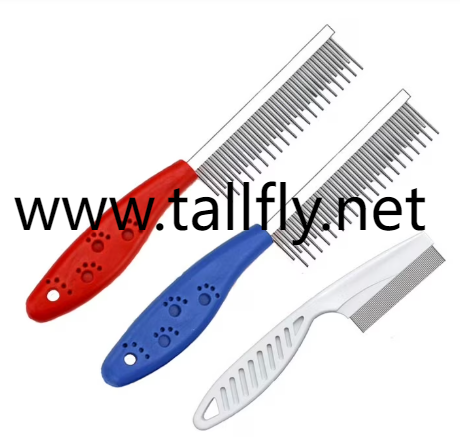Training a puppy is an exciting yet challenging journey. As a pet parent, you want to provide your furry friend with the best tools for a smooth training experience. When it comes to choosing a pet leash for puppy training, there are several factors to consider. A Pet Knot Untying Comb can also be a helpful accessory in this process, but let's focus on the leash selection tips first.
The material of the leash is crucial. Opt for durable and comfortable materials that are gentle on your puppy's skin. Common choices include nylon, leather, and woven fabrics. Each material has its pros and cons. Nylon leashes are lightweight and easy to clean, but they might not be as soft as leather. Leather leashes offer a classic look and a firm grip, but they require regular maintenance. Woven fabric leashes are comfortable and have some give, which can be beneficial for puppies that pull.
The length and width of the leash matter too. For puppy training, a leash that's too long can be difficult to control, while one that's too short may restrict your puppy's movement. A general guideline is to choose a leash that's about 4 to 6 feet long. The width should be appropriate for your puppy's size. A wider leash provides more control, but it might be too heavy for small puppies. A narrower leash is lighter but may not offer enough strength for larger breeds.
The type of leash can vary based on your training needs. Retractable leashes give your puppy more freedom to explore but can be harder to manage during training sessions. Non - retractable leashes provide more control and are often recommended for basic obedience training. If you're training your puppy to walk politely on a leash, a martingale collar combined with a leash can be effective. However, it's important to use these tools correctly to avoid harming your puppy.
Comfort is another important aspect. The leash should have a comfortable handle or grip to prevent blisters on your hand during long training sessions. Some leashes come with padding or ergonomic designs that can enhance your comfort. Also, consider how the leash connects to your puppy's collar. A secure and comfortable connection is essential to prevent escapes and ensure a pleasant training experience.
Durability is key, especially since puppies can be energetic and sometimes chew on their leashes. Look for leashes that are made with high - quality materials and sturdy hardware. Reinforced stitching can increase the leash's lifespan. However, even the most durable leash will need replacement eventually, so it's a good idea to have a couple of spare leashes on hand.
When training your puppy, consistency is vital. Using the same leash for each training session can help your puppy associate the leash with positive experiences. This can make them more willing to participate in training activities. Additionally, always reward your puppy with treats and praise when they behave well during leash training. This positive reinforcement will encourage them to continue displaying good behavior.
A Pet Knot Untying Comb can be a useful tool to have when dealing with tangled or matted fur that might occur during training sessions, especially if your puppy has long or thick hair. It can help you quickly and gently remove knots, preventing discomfort for your puppy and ensuring a more enjoyable training experience.
In conclusion, selecting the right pet leash for puppy training involves considering factors like material, length, width, type, comfort, and durability. By taking these tips into account and having a Pet Knot Untying Comb handy for fur care, you'll be well - equipped to embark on a successful puppy training journey. Remember that patience and consistency are crucial, and with the right tools and approach, your puppy will grow into a well - mannered and happy companion.

